typologyenthusiast
Member
- Joined
- Aug 7, 2019
- Messages
- 774
- MBTI Type
- INTJ
- Enneagram
- -
Metal Toy Soldier Miniature continued
Do you do miniatures or DIY model planes or cars yourself? There are also people on youtube who restore thrown away model cars or stuff into former glory.
The State Hermitage Museum said:For more than two centuries now the Hermitage has been adorned by a unique exhibit that never fails to evoke the enchanted admiration of visitors - the famous Peacock Clock. The figures of a peacock, cockerel and owl that form part of this elaborate timepiece-automaton are fitted with mechanisms that set them in motion.
The creation of mechanical birds had long been of interest to inventors: back in the Ancient World figures of "singing" birds had been used to embellish clepsydras - water clocks. In the 18th century the makers of automata tried to create a system that would enable their birds not only to sing, but also to behave as if alive, and they made them life-size. In the middle of the century, for example, the whole of Europe admired the mechanical duck made by the French craftsman Jacques de Vaucanson, which was able to eat, drink, move and behave in the most life-like manner.
The most celebrated creator of mechanisms of this sort in the second half of the 18th century was the London jeweller and goldsmith James Cox. His fertile imagination generated ideas that were then turned into reality by the craftsmen and mechanics of his company. Cox's firm produced a large number of elaborate automata, sumptuously decorated in a great variety of ways, for European and Eastern clients. Cox became truly famous, however, when in 1772 he opened his own museum - the Spring Gardens, in which he exhibited a large number of mechanical figures of exotic animals, birds and human beings. To fund the making of expensive automata Cox organized lotteries: in London in 1773 and in Dublin the next year. A surviving catalogue of the Dublin lottery lists two peacocks as numbers 6 and 8. From the description of the items it is clear that this pair of automata differed from the Hermitage composition: the peacock was perched on an oak stump, around which two snakes twined. There is no mention of the figures of a cockerel and owl, or of the mushroom that acts as the clock dial.
The history of the Hermitage's Peacock Clock begins in 1777, when the Duchess of Kingston visited St Petersburg. Balls were given in the Russian capital in honour of this wealthy and distinguished guest. Grigory Potiomkin, who met the Duchess in society, learned of James Cox's magnificent mechanisms. Pandering to Catherine II's passion for collecting, the Prince commissioned the celebrated craftsman to make a monumental automaton with a clock for the Empress's Hermitage. In order to meet this expensive order as quickly as possible, Cox, whose financial affairs were currently not in the best of health, decided to use an existing mechanical peacock that featured in the Dublin lottery. He expanded the composition with a cockerel, owl and a clock mechanism with a dial incorporated into the head of a mushroom, and removed the snakes. To create his new automaton, Cox recruited the assistance of Friedrich Jury, a German craftsman who had settled in London.
The Peacock Clock arrived in St Petersburg in 1781. The records of the Winter Palace chancellery listing the valuables that Catherine II acquired in that year include mention of two payments - on 30 September and 14 December - to the clockmaker Jury for a clock delivered from England. The payments amounted to 11,000 roubles (around 1,800 pounds sterling) and were made from the Empress's personal funds on the basis of a letter from Prince Potiomkin.
The clock was brought to Russia in pieces. At Potiomkin's request the Russian mechanic Ivan Kulibin set it in working order. From 1797 to the present day the Peacock Clock has been one of the Hermitage's most famous exhibits. It is, moreover, the only large 18th-century automaton in the world to have come down to us unaltered and in a functioning condition.
sourcewikipedia said:UNESCO, the agency in charge of culture from the United Nations, on November 7, 2003 designated wayang as a famous puppet shadow show from Indonesia, an invaluable world heritage in the art of speech (Masterpiece of Oral and Intangible Heritage of Humanity).Actually, puppet shows do not only exist in Indonesia because many other countries have puppet shows. However, shadow puppet shows (Wayang) in Indonesia have their own unique and unique style of speech, which are original masterpieces from Indonesia. For this reason, UNESCO included it in the Representative List of Intangible Cultural Heritage of Humanity in 2003.It is thought that performing arts were brought in by Indian traders. However, the local genius and culture that existed before the arrival of Hinduism merged with the development of performing arts that entered giving its own color to the performing arts in Indonesia. Until now, the earliest records that can be obtained about wayang performances come from the Balitung Inscription in the 4th Century which reads as si Galigi mawayang.
I must emphasize that The puppets are not just for display only, like in the museum. Instead, They are played. If you are familiar with action figures, these puppets are not like them. While action figure seems to me like a more modern version of the traditional puppets, unlike those puppets, Action figure is arguably made for display only. In fact, action figures don't have the hand grip, where "Dalang" put his hands on in traditional puppets. Indonesian usually call puppet in local language "wayang". Indonesia has traditional puppet theater show, which is actually an old culture originated from the Javanese. Some says that it was influenced by Indian Hindu Myth: Mahabharata, Ramayana. But have you ever seen puppet theater shown in India in Hindi? Indian influence may have been partly acknowledged in the story. But probably not so in the show as a whole.
source
The language in which the puppet theater is played in is still Javanese. The puppet master who play them is called "Dalang". During a show, Dalang usually tells a story and dubs the voice of each wayang Character that he plays.
Below is a video of one of the traditional puppet theater show.








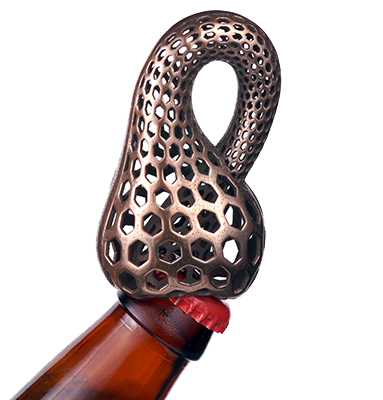
Bathsheba Sculpture - The Klein Bottle OpenerGrossman said:The Klein Bottle is a math joke, a surface with one side. Just as it's about to enclose space like a regular bottle, it curves back with a twist and the inner face merges with the outer – and suddenly inside and outside are one, like the side of a Möbius strip.
This neat trick can't quite exist in three dimensions, since the surface has to cross through itself, but at least we can make approximate models. This one is 3D printed in stainless steel, with some bronze for color. It's durable, washable and ergonomic, sized to fit the hand sweetly.
It's the perfect finishing touch for any math fan's kitchen, and you don't have to know a lot of geometry to enjoy it.
Yes, it really opens bottles!
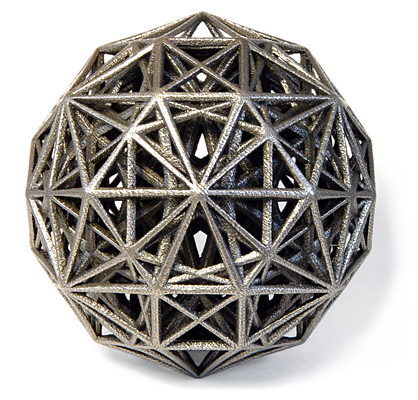

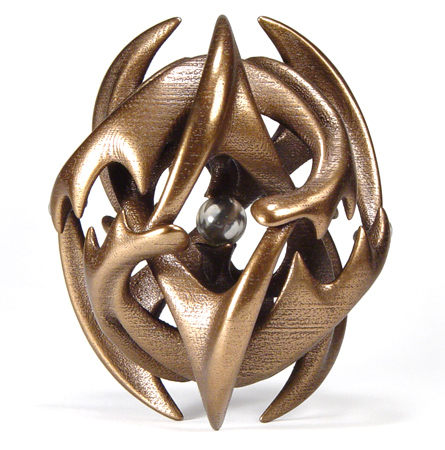
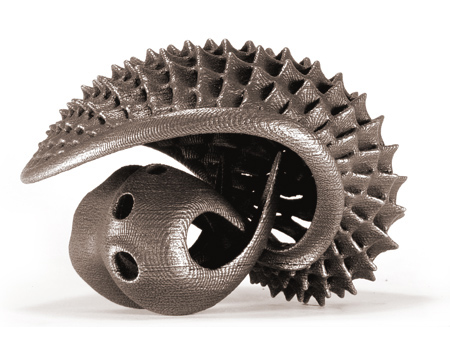
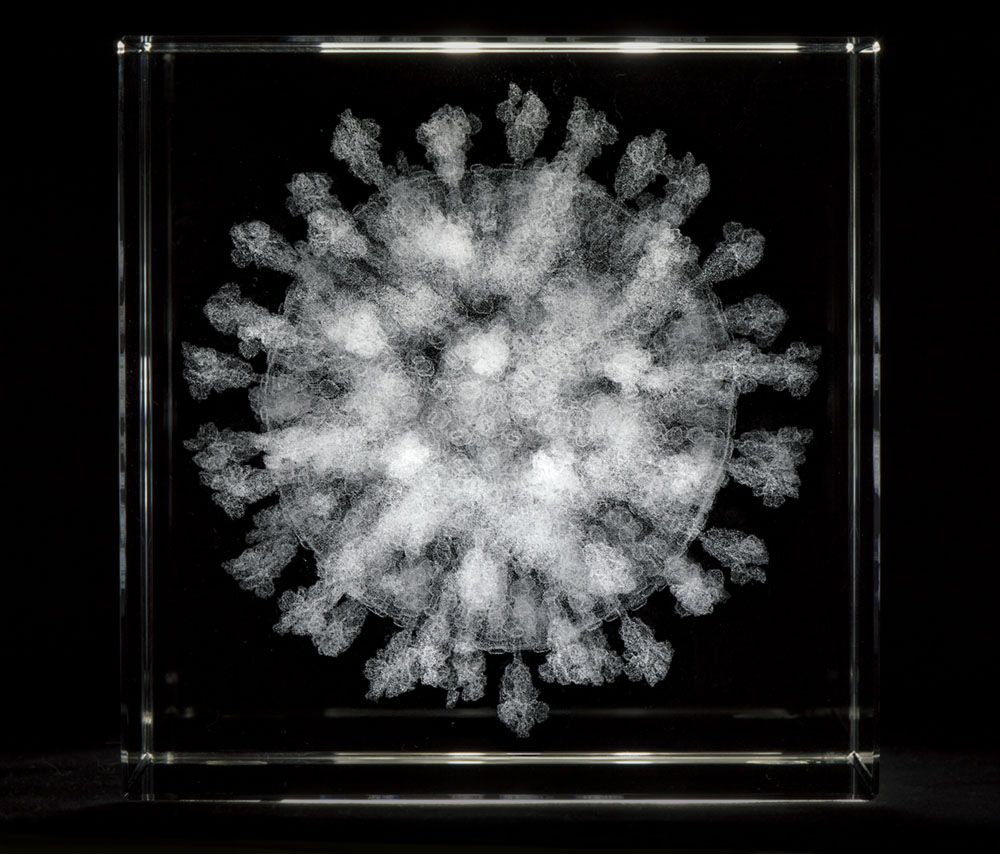
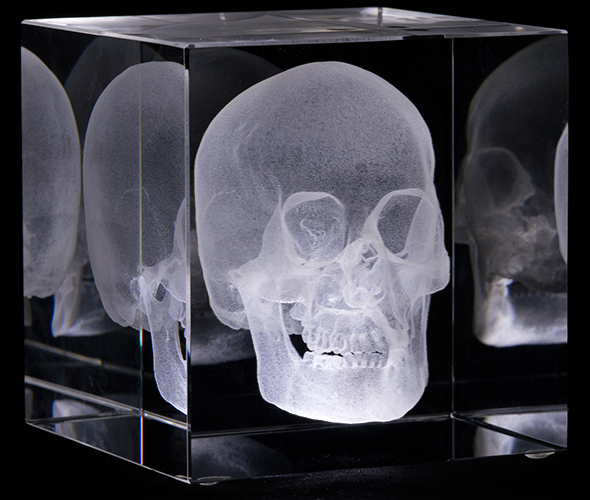
Pretima Miniature
The motanka doll is one of the most ancient handmade items in Ukrainian household. Initially fashioned as a domestic symbol of fertility and household guardians, these dolls played an important role in the everyday life of Ukrainians in the old days. While still in use today, the tradition has become more concerned with style and décor than anything ritualistic.
The main peculiarity of the doll is that it should be faceless, often with cross on head. It used to be made of any pieces of fabric that could be found at home. Craftsmen draw no faces (no eyes, nose, mouth) to let small children develop their imagination and think of the doll`s emotions while playing with the doll. According to the ancient popular beliefs, the face inspired a soul in a doll. The soul can be good or bad, so it was safer not to give a soul to the doll at all than to risk giving a bad one. Ukrainians used to believe that the doll would take away the illness from children. It was also believed that motanka protects the house from evil spirits and ghosts.These dolls are usually made of the natural materials such as hay, straw, wood, herbs, dry leaves, grains, seeds and are filled with fragrant herbs. Motanka dolls were decorated with traditional ornaments and embroidery. These days motanka dolls became popular gift idea for various holidays and weddings. There are different motanka dolls specially made for baby showers, engagements, weddings and even funerals. The doll-motanka of bride helps the girls to turn away the evil eye and support them through their marriage. These dolls are wealthy dressed and decorated because it symbolizes the wealth of the would-be-family. At birth of the child relatives often give the baby doll-motanka. Parents put it in the cradle in order to protect the sleep and the health of the newborn. Traditional Ukrainian motanka dolls are an interesting tradition that survived centuries; these dolls keep protecting the household of modern Ukrainians till our days.
source
